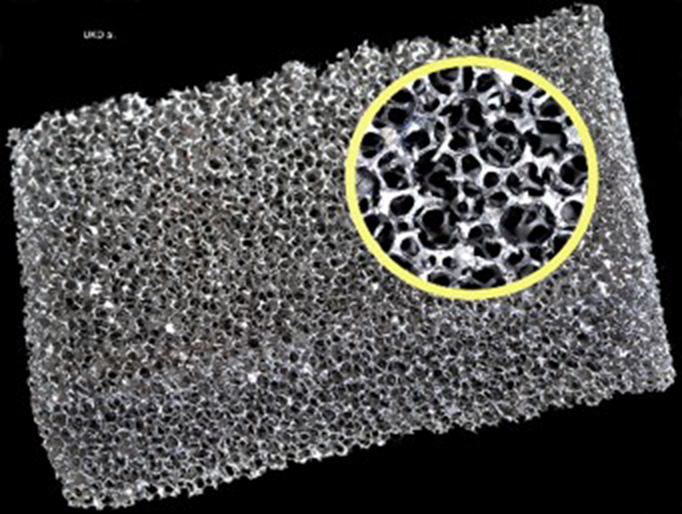


Open celled ceramic and metal foams own a spongiosa-like structure which is almost identical to the natural human bone structure. They are perfectly suited as substitution material for bone defects thanks to an ideal ingrowth of endogenous cells and blood vessels. As a result, this high osteointegration leads to fast recovery processes of patients.
Hence, stress shielding is avoided by special materials selections and modifications of the cellular ceramics and metals. Therefore, the stiffness of the implant material is adapted to the stiffness of the bone, which prevents shielding and bone resorption. Bone and implant create a real composite where endogenous cells grow on the surface and inside the implant directly. Therewith, implant loosening can be prevented and the risk of revision surgeries decreases, which are very stressful for the patients.
Together, the Fraunhofer Institutes IKTS and IFAM are developing bone substitution materials made of metal foams with high biocompability. The current focus is on the following materials:
- Titanium and its alloys
- Stainless steel 316L
- Tantalum
With regard to their adapted stiffness and strength, the results of titanium foam developments indicate a particularly high biocompatibility of the implants. Animal experiments showed that the implants were completely ingrown by bone after one year and the bone was in direct contact to the metal surface which results in very good composite properties and load capacities.
Furthermore, ceramic bone substitution materials made of hydroxylapatite and biodegradable tricalcium phosphate are in development.
Services offered
- Research on ceramic and metal foams for bone substitution materials
- Slurry and coating development
- Characterization of ceramic and metal foams
Technical equipment
- Extensively equipped laboratories for the development of ceramic and metal foams for bone substitution
materials - Extensive rheological measurement possibilities for slurries
- Aggregates and test rigs for measurements of foam properties
Examples and references
- Open-celled TCP and HAP ceramic foams for implants
- Open-celled titanium and tantalum foams for implants